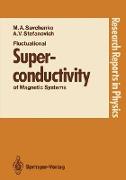- Start
- Fluctuational Superconductivity of Magnetic Systems
Fluctuational Superconductivity of Magnetic Systems
Angebote / Angebote:
This is a monograph on the fluctuational theory of superconductivity. The theory was originally developed by M. A. Savchenko in 1964 in response to the work of B. T. Matthias, the discoverer of superconductive compounds. Further development of the theory led to the prediction of the existence of high-temperature superconductors among magnetic and nonmagnetic compounds of rare-earth metals, ceramics, and polymers. In 1987 this prediction was experimentally verified by the discovery of high-Tc superconducting rare-earth metal oxides by I. Bednorz and K. Muller. To date, this is the only account that explains consistently all the available data. The theory of high-temperature superconductivity is based on the concept of an enhanced electron-phonon interaction which leads to an attraction between electrons forming superconducting pairs. This interaction is due to the exchange spin fluctu ations (exchange enhancement effect). In compounds in which there is no magnetic ordering except at very low temperatures, such as in rare-earth metal oxides, the electron-phonon interaction is strengthened due to fluctuations in the spins of the conducting electrons. If there is magnetic ordering in a superconductor at a tempera ture higher than or of the same order as the critical superconducting temperature Tc, then the attraction in the electron pairs will be further increased because the Coulomb repulsion is overwhelmed by fluctuations in the spins forming the long-range anti fer romagnetic order.
Folgt in ca. 5 Arbeitstagen

